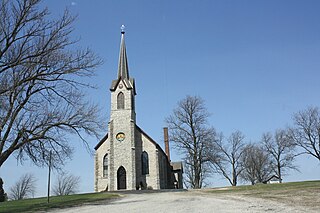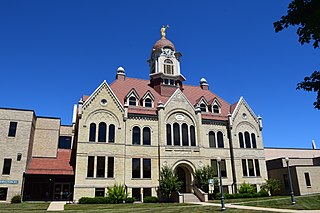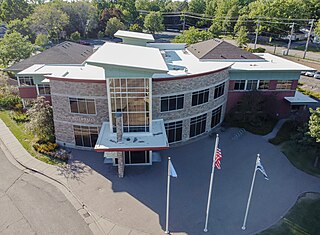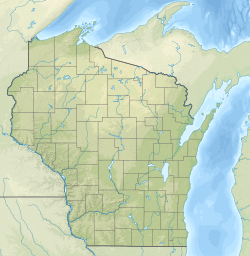
Charlestown is a town in Calumet County in the U.S. state of Wisconsin. The population was 774 at the 2020 census, a tiny decrease of 775 at the 2010 census. The unincorporated community of Hayton is located in the town.

Juneau is a city in Dodge County, Wisconsin, United States. The population was 2,658 at the 2020 census. It is the county seat of Dodge County.

Mayville is a city in Dodge County, Wisconsin, United States, located along the Rock River and the Horicon Marsh. The population was 5,196 at the 2020 census.

Augusta is a city in Eau Claire County, Wisconsin, United States. The population was 1,567 at the 2020 census, up from 1,550 at the 2010 census. The city is bordered by the Town of Bridge Creek.

Lancaster is a city in and the county seat of Grant County, Wisconsin, United States. The population was 3,907 at the 2020 census.

Mauston is a city in and the county seat of Juneau County, Wisconsin, United States. The population was 4,347 as of the 2020 census. It is approximately 70 miles northwest from the state capital, Madison.

Prescott is a city in Pierce County, Wisconsin, United States, at the confluence of the St. Croix River and Mississippi River. Prescott is located at the edge of the Minneapolis–St. Paul metropolitan area. The population was 4,333 at the 2020 census, making it the second-largest city in the county after River Falls, and the largest entirely within Pierce County.

Phillips is a city and the county seat of Price County, Wisconsin, United States. The population was 1,533 at the 2020 census.

Richland Center is a city in Richland County, Wisconsin, United States that also serves as the county seat. The population was 5,114 at the 2020 census.

Shawano is a city and the county seat of Shawano County, Wisconsin, United States. The population was 9,243 at the 2020 census.

Galesville is a city in Trempealeau County, Wisconsin, United States. The population was 1,662 at the 2020 census. A dam on Beaver Creek is located at Galesville, forming Lake Marinuka north of the city. The mayor is Vince Howe.

Whitehall is a city and the county seat of Trempealeau County, Wisconsin, United States, along the Trempealeau River. The population was 1,645 at the 2020 census.

Chilton is a town in Calumet County in the U.S. state of Wisconsin. The population was 1,059 at the 2020 census, down from 1,143 at the 2010 census. The city of Chilton is located partially within the town. The unincorporated community of Brant is located in the town.

New Holstein is a city in Calumet County, Wisconsin, United States. The population was 3,098 as of the 2020 census. The city is located within the Town of New Holstein.

Jefferson is a city in and the county seat of Jefferson County, Wisconsin, United States. It is at the confluence of the Rock and Crawfish rivers. The population was 7,793 at the 2020 census. The city is partially bordered by the Town of Jefferson.

Lake Mills is a city in Jefferson County, Wisconsin, United States. The population was 6,211 at the 2020 census. The city is located partially within the Town of Lake Mills.

Necedah is a village in Juneau County, Wisconsin, United States. The population was 916 at the 2020 census. The village is located within the Town of Necedah.

Oconto is a city and county seat of Oconto County, Wisconsin, United States. The population was 4,609 at the 2020 census. It is part of the Green Bay metropolitan area. The city is located partially within the town of Oconto.

Durand is a city in and the county seat of Pepin County, Wisconsin, United States. Situated on the banks of the Chippewa River approximately 15 miles (24 km) from its confluence with the Mississippi River, the city borders the Town of Durand. The population was 1,854 at the 2020 census.

River Falls is a city in Pierce and St. Croix counties in the U.S. state of Wisconsin. It is located mostly within the town of River Falls, and adjacent to the town of Kinnickinnic in St. Croix County. River Falls is the most populous city in Pierce County. The population was 16,182 at the 2020 census, with 12,546 residing in Pierce County and 3,636 in St. Croix County. It is part of the Minneapolis–St. Paul metropolitan area and located approximately 30 miles (48 km) east of the center of that region.






























